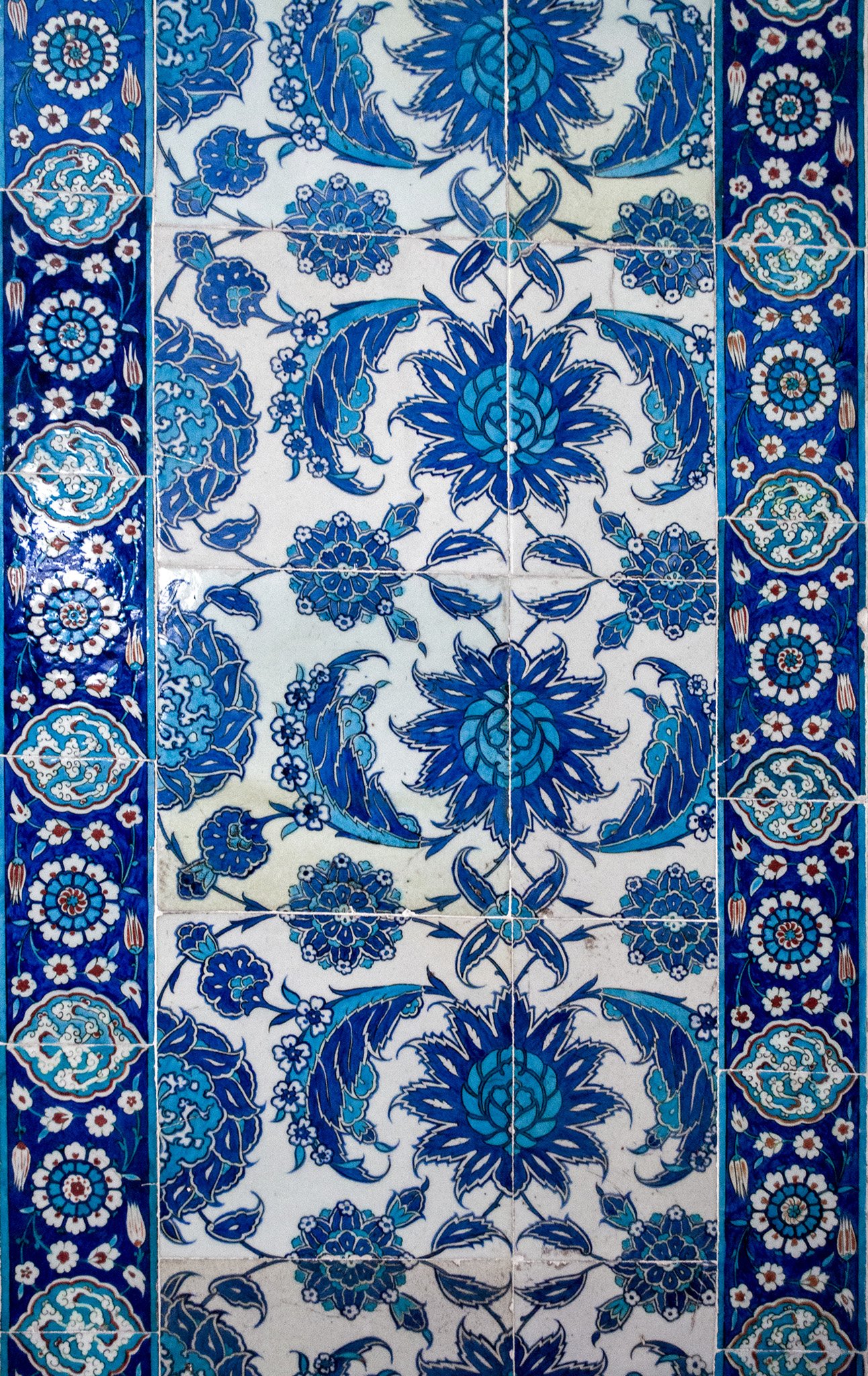
ART OF FAIENCE TILES IN RUSTEM PASHA MOSQUE IN ISTANBUL
(part two)
Author: Kenan Šurković, editor of Islamic Arts Magazine • Illustration: Mihrab in Rustem Pasha Mosque, Istanbul • Photo: Kenan Šurković

Rustem Pasha Mosque in Istanbul is one of the ten great Bosniak mosques in this city. Rustem Pasha was born near Sarajevo (at Butmir), he was a grand vizier and the son-in-law of sultan Suleiman having married his daughter Mihrimah.
Rustem Pasha Mosque is famous by its Iznik faience tiles, which almost completely cover the walls of this building. Interestingly, two more Bosniak mosques enjoy this status: they are Piale Pasha Mosque and Mehmed Pasha Sokolovic Mosque, which are also famous by their tiles.
In Part One already we noted that tiles in Rustem Pasha Mosque were part of his personal collection. We will now try to make a style breakdown of, at the first glance, a visual forest of shapes and forms which spread over hundreds of square meters of walls of the mosque. Motifs are countless and are a sublimation of the entire repertoire of this kind of art at the time.
Iznik tiles had at least three stages of development. The first one began in the late 15th and the early 16th century, the second one in the mid-16th century, when they reached their climax although the creative vitality lasted until the early 17th century, and finally the third one, which lasted until the mid-18th century and the last great opus of these tiles in the Hekimoglu Ali Pasha Mosque in Istanbul.
Tiles in the Rustem Pasha Mosque belong to the second best-known period, which was distinguished by the introduction of a new palette of colors; thus, besides the basic blue, which had prevailed in the previous period, red (a specific kind of dark red), green and several nuances of blue began to be used. This period also witnessed new patterns and completely new composition schemes. We have already written about the rumi and hataji styles of decoration. The former is more abstract and based on the interwoven curly ornament, while the latter highlights more realistic floral motifs.
In the Rustem Pasha Mosque one can observe both approaches. The emphasis should certainly be given to the hataji style, which dominates the interior. Hataji soon became the trademark of the Ottoman art, since artists themselves mostly adhered to it and considered it their own, probably due to the sensibility of the time. Indeed, there was a certain difference between ornamenting, for example, manuscripts and tiles in the case of elaborated schemes, which were more abstract in the former instance. However, if we compare the style of the well-known illuminator Karamemi and, specifically, his illumination of the Diwan by sultan Suleiman, we will observe that the ornamentation greatly coincides with what we can see on the tiles, which can prove that the same masters worked for both art industries.
Still, what is particularly attractive on tiles of the Rustem Pasha Mosque is diverse representation of the motif of tulips which was, at the time, becoming one of central motifs of Ottoman decoration art. Thus, 36 different kinds of stylization of tulips have been recorded on these tiles. Petals are typically white with red details. Only few petals are exclusively blue, while some are painted red. Besides (tulips), different kinds of interwoven hataji ornament combined with rumi patterns prevail in the mosque. The repertoire of all these is vast and is presented in the form of climbing plants (spread along the vertical), bouquets or flowery bushes, floral spirals or symmetrical compositions of various patterns. Besides floral patterns, walls of the mosque are also adorned with a composition which represents Kaaba in Mecca with the surrounding yard. It was created in an extremely simplified stylization though in a very impressive visual manner.
In the Rustem Pasha Mosque we also discover a large number of ceramic tiles with inscribed texts in Arabic (mostly ayats and hadiths), on over 840 tiles in blue and white.


